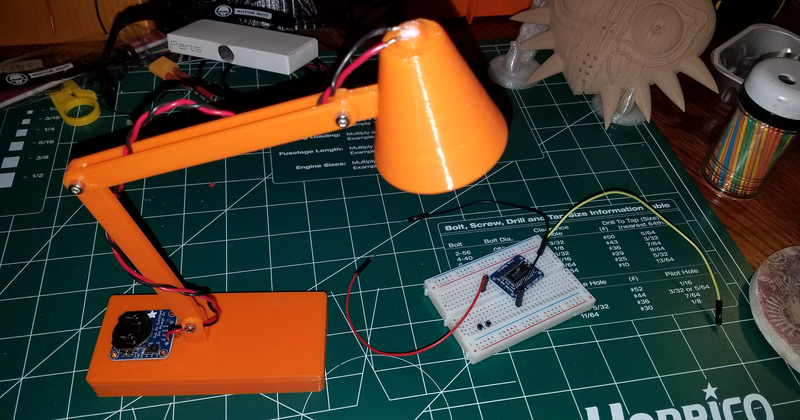If there is one constant in the world of making things at the bench, it is that there is never enough light. With halogen lamps, LEDs, fluorescent tubes, and more, there will still be moments when the odd tiny part slips from view in the gloom.
It’s fair to say that [OddDavis]’ articulated mini lamp will not provide all the solutions to your inadequate lighting woes, as its lighting element is a rather humble example of a white LED and not the retina-searing chip you might expect. The lamp is, after all, an entry in our coin cell challenge, so it hardly has a huge power source to depend upon.
What makes this lamp build neat is its 3D-printed articulated chassis. It won’t replace your treasured Anglepoise just yet, but it might make an acceptable alternative to that cheap IKEA desk lamp. With the coin cell LED you’d be hard pressed to use it for much more than reading even with its aluminium foil reflector, but given a more substantial lighting element it could also become a handy work light.
If 3D printed articulated lamps are your thing, take a look at this rather more sophisticated example.

















I have a couple of little 4″ tall lamps I got from who know where, and they are absolutely amazing for illuminating tight spots.
It’s a lot like this one: https://www.amazon.co.uk/Funtime-LF6590-Mini-Desk-Lamp/dp/B010DF3N5A
Never heard of Angelpoise but HOLY CRAP they’re expensive
Worth every penny. Like a good soldering station or a quality meter.
These examples all rely on friction at the joint to keep the arm in place.
Is it possible to make a counter-balanced/counter-sprung version that works for any size light, or will the design always be dependant on the weight of light?